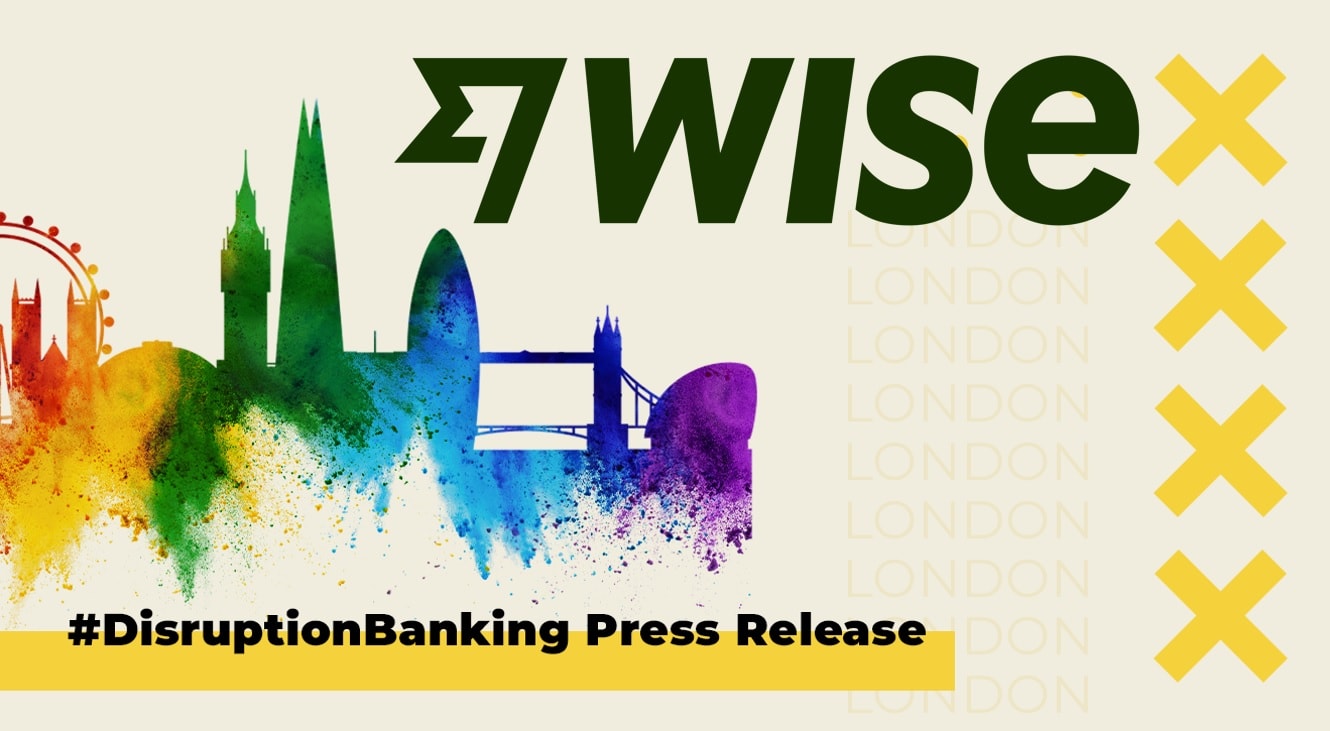The disruption that technological innovation has caused to the banking industry is unquestionable. Large global banks are investing in technology on a scale unparalleled by many companies in most sectors outside of BigTech. J.P. Morgan has set the perfect example with its $11billion investment in ‘a broad number of technologies’.
Meanwhile, a less often told story is that banks also outsource an increasing share of their work to smaller software companies, such as Fusion Risk Management who we will come back to later in this story.
If you are unfamiliar with the term ‘operational resilience’, it might sound like one of those made-up concepts that have been thrown around more often post-2008. It is, however, a crucial element of business planning, that allows firms to operate in troubled times. The Bank of England defines it as:
“‘Operational resilience’ is the ability of firms and the financial system as a whole to absorb and adapt to shocks, rather than contribute to them… Extending beyond business continuity and disaster recovery, firms must have plans in place to deliver essential services, no matter what the cause of the disruption.”
The Bank of England’s approach to Operational Resilience is further defined by their Financial Stability Strategy of which some of the key takeaways are:
“Left unchecked, the financial system can develop in ways that leave it vulnerable to shocks. It can take excessive risks; and, where borrowers become highly indebted, shocks to the real economy, and hence the financial system, can be amplified. There is therefore a role for public authorities to ensure that the system is resilient to potential risks: by establishing a rigorous baseline level of resilience to protect the UK real economy; ensuring the level of resilience adapts to the risks the system faces; and enabling the system to absorb shocks, if/when they occur, so it can continue to support the economy.”
Examples of cases where Banks have not done enough to mitigate risks and strengthen their resilience, can be seen in the stories recently involving Citi and Goldman Sachs to name but a few:
A U.S. regulator has fined Citi $400 mln for repeatedly failing to bring risk management and other controls up to snuff. Incoming boss Jane Fraser will start the job fighting decade-old problems, says @AntonyMCurrie https://t.co/FCOSoffBNH pic.twitter.com/Q4PLpBWnDT
— ReutersBreakingviews (@Breakingviews) October 8, 2020
To discuss the challenges around the concept of Operational Resilience, we spoke with Paul Ybarra, Chief Revenue Officer at Fusion. Paul also discussed the rise of cloud-based software services in the banking sector, and the role of Salesforce in Banking.
Operational resilience, more than just a buzzword
Paul explained to us how the team at Fusion approach ‘operational resilience’:
“When we think of operational resilience, for us it is about the six pillars. You’ve got business continuity, you’ve got IT disaster recovery, crisis & incident management, operational risk, third party vendor management, and compliance & Audit management. Those pillars anticipate what the worst thing that can happen to our technology, to our people, or to our processes, and to our important business services. What would disrupt our ability to continue doing business. We take a look at all of those things together. That’s how we look at operational resilience, by breaking them down to those major pillars.’
Paul continued by sharing why it might be that ‘operational resilience’ is still not widely adhered to, even with the lessons learnt from the financial crisis. He pointed out that this might have been due to a ‘lack of imagination’. The fact that many companies failed to anticipate a possible pandemic amplifies this problem further. The other reason might be, Paul thinks, that preparing for the worst-case scenario is not the most popular thing to do at company meetings:
“I’ve heard people say that ‘you could not have not imagined that a global pandemic could hit and just impact companies the way it has’ And that’s not accurate. There are plenty of companies (some of them our customers), who did anticipate turbulent times and did have a plan in place, so that when it hit, and they saw certain mile makers, they executed their plan.”
“Now, a once-in-a-century pandemic, well, that certainly needs thinking out of the box. The reality is that many of our customers were activating their pandemic plan back in December 2019, in January 2020, and we saw that with our customers who had a large presence in China.
“I still remember the day that one of my business analysts came to me and said: ‘Hey, our customers are starting to activate their pandemic plan in China. There’s something going on’. And that was before you started hearing it widely reported.”
“It’s easy to do business continuity. Very smart individuals are coming up with all these scenarios that need to be accounted for and say: ‘Yes, I’ve thought about that. I understand the impact’. At the end of the day, it’s not the most enticing thing to do, to sit down and talk about all the bad things that can happen to your business. ‘How will it impact locations? How will it impact technology? How will it impact the people? How will it impact our important business services?’ These are not topics that people actively look to address.”
“The people who did face these questions are the individuals that ensured organizations got through the last 12 months. And the people who listened to and actioned the business continuity planners and the risk planners, are the ones that came through much better than those that did not.”

The Perfect Storm
It was not only companies with a pandemic plan that came through the past year stronger, software companies that help people to plan for these scenarios did too. “We shone during the pandemic. We helped companies plan for it, and then we helped them get through it. And, finally, we helped them to recover and learn from it,” shared Paul.
The success of Fusion, however, was not as straightforward as the last year may lead you to believe.
“Our founders started Fusion 15 years ago. They had been in hardware up till then, when they realized: ‘when servers go down, people often don’t have a plan’ and they started to look into this. At ‘how an outage can ripple across every piece of technology, every process, and every individual, every critical business service that is part of the business,’ and started focusing on this. The whole thing has been a bit of a sky is falling scenario, where people don’t want to talk about these types of scenarios. However, our founders persevered, they made some great decisions, and created a technology using Salesforce as a platform.
“Early years, it was slow going. But we’re in a bit of a perfect storm for a software company in our space right now.”
The Regulator and the Pandemic
Fusion was named a ‘leader’ in Gartner’s Magic Quadrant for Business Continuity Management Program Solutions, and more recently in IT Vendor Risk Management Tools. In 2020, Fusion saw a 72% increase of users seeking immediate support for business continuity. To augment their strategy, Fusion also provided free resources for companies to help better understand how to navigate the pandemic through various pandemic toolkits, webinars, and podcasts.
“It’s been a great Q4, and Q1 for us so far. The markets are rebounding from the pandemic, and now we are also seeing the Bank of England refocussing on operational resilience in pending regulations this year. There is a little bit of a perfect storm, with the way things are coming together: a pandemic is a thing people realized they weren’t prepared for, they realized they had critical third party risks that they had not prepared for properly, which is what we help companies to do.”
The other intriguing element of the discussion is how Fusion have also taken part in a Salesforce initiative to create work.com. Paul goes on to explain: “Salesforce, during the pandemic last year, created something called work.com. It was really designed to help companies get back to the workplace and get back to normal. Fusion were one of six launch partners, along with Accenture, Deloitte, PwC and others. So it was pretty exciting for us to be in that group helping the global community get back to work and get back to some kind of normality.”
With regulators, such as the Bank of England, Financial Conduct Authority (FCA), and the Prudential Regulation Authority (PRA), taking a stronger stance against risk management oversight. Fusion has also developed products for their customers that are up-to-date and in-line with the latest regulations.
“We’ve got teams that just follow what each of the regulatory bodies are doing, and we’re making sure that our software is flexible and agile enough. At the end of the day, customers want to make sure that we’re helping them be operationally resilient so that when the Regulator turns up, they can show their methodology from top to bottom.
“Some of the regulating bodies that we pay special attention to are the likes of: the Bank of England, the Basel Committee, Institution of Internal Auditors, Federal Reserve, International Electrotechnical Commission (IEC), and many more. We’re making sure that our teams are keeping an eye on their guidance and any pending regulations that are in the pipeline, so that our customers in turn will be able to remain compliant.”
How Tech is changing the Banking landscape
Fusion works with many of the largest financial institutions in the world. Although Paul couldn’t share the exact names of Fusion’s clients, he assured us that the company’s services are very much in demand in the banking and financial services sector. He explained to us that instead of using their own in-house software, many of the larger banks are turning to companies like Fusion for software development and support.
“Very few of the larger banks, at least in our area of business continuity, with risk management, with third-party vendor, are manual. Most of them have their own in-house software.
Irv's been waiting for this day since '94#COBOL pic.twitter.com/9JVN5R5e6u
— Marcus Butler (@fullduplexdev) April 5, 2020
“What we are seeing is that we are reaching the end of the line with many of these in-house products. Those systems were built 15 – 20 years ago now. Today, most of the big banks that we’re dealing with, either as customers, or because they are going through the evaluation process of a new system. Those banks have realized that their current in-house systems have come to the natural end of their life, like many things that were created 15 to 20 years ago.”
“The Banks do have technology. And it’s not manual, it’s mainly an in-house platform that many of them have outgrown. Most of their systems are on premises (on-prem). Now this is changing too. It is worth noting that less than a decade ago, none of the banks were cloud-based (or off-prem as some call it). Everything back then was on-prem, they had to maintain controls and systems in-house. Now the tide is turning and even accelerating during the pandemic.”
Fusion recently signed up two of the largest investment banks, which are now using the cloud-based Fusion Framework System. Paul put some more context around this story:
“We’re onboarding two very large global banks right now. They’ve come to us and said, ‘Hey, we realized that we probably don’t want to build in-house anymore. And it doesn’t make sense to build because that just means that we have to keep this up on our side, we have to maintain everything. We want to talk to you because we understand how a shared service would benefit us.’”
We're excited to announce that Fusion has recorded several client wins among multinational and global investment banks!
— Fusion Risk Management (@FusionRiskMgmt) February 22, 2021
"[We] look forward to supporting their unique #operationalresilience and regulatory needs," said Fusion CEO Mike Campbell. Learn more: https://t.co/lRfP4SxNDC pic.twitter.com/NNPWUzS37D
But what about Banks who have already invested heavily in Tech? Last year we covered stories about JPMorgan and Deutsche Bank and how they are spending billions of dollars per year on Technology. Surely these banks don’t need any extra tech on top of what they already buy?
Paul sees it differently:
“You might be very surprised, several of the largest banks in the world, what we call global, systematically, important banks, the G-SIBs, as you know, are already doing business with us. A large percentage of them, in fact, with another large percentage of them in the pipeline, evaluating the tools we offer.”
Sandboxes and Innovation in Technology
To evaluate new concepts, processes and tools, companies have the chance to try out the new concept in an isolated sandbox environment. A sandbox is an isolated testing environment that enables users to run programs or execute files without affecting live applications, systems or platforms on which they run. Paul explained how this refers to working with Fusion:
“We use sandboxes, of course. We test operational resilience releases in a sandbox, our customer is involved, does the testing, looks to make sure that it matches the usability case that they’re looking for, before anything moves to the production phase.”
Paul calls this process ’proof of value versus proof of concept’.
“We know that the concept works, it’s just a matter of ‘Will this bring value to the customers that we’re talking about their operational resilience?’ During those proof of values, the customers are making sure that it’s got the functionality that they want, and then also, sometimes we’ll do some ‘light’ integration work.”
Why are banks using Salesforce?
Paul explained that CIOs they have worked with prefer working on integrated platforms in which their companies have already invested. This is where Salesforce can be useful.
Salesforce is an integrated customer relationship management platform. (Based on the aforementioned Gartner’s Magic Quadrant, Salesforce is the #1 CRM solution provider platform.)
“Almost every bank is doing business with Salesforce within their organization. Salesforce has been vetted, and sometimes even adopted to their platforms. So we can build on top of the platform that they’ve already adopted. And the great thing is that Salesforce is one of the most integrated platforms in the world. So we’re taking feeds from everything, we’re taking feeds about their levels of service, we’re taking feeds from their crisis management system, their CMDB, we’re taking feeds from everywhere.
“You get a much better decision-making process, because we can map the entire critical business process, pulling every piece of data around people, around rosters, and around technology, and important business services. We understand upstream and downstream. And what the ramifications are if there’s an interruption in critical business processes.”
The question about why Banks are spending so much on Tech is an evolving topic. Just like a decade ago when many banks were still not aware of the impending Cloud revolution, and many of them were still hiring Cobol programmers, today things are changing again.
The importance of operational resilience in the whole Tech debate is critical for banks to consider, and still seems like one of the key areas of investment over the coming years.
With the addition of Salesforce the market is certainly evolving. A system that was once meant to help Sales people fulfil their sales targets is now helping resolve global banking challenges. Another thing nobody could have imagined a decade ago.
One thing is clear, more disruption will follow, and those who have invested wisely and taken the Tech challenge seriously are the ones who will come out with the least fines and the best reputations. And in banking, reputation and trust remain paramount.
Author: Benjamin Jenei
#OperationalResilience #Banking #RiskManagement #Regulation #Sandbox #Salesforce #Cloud #PerfectStorm
About Fusion Risk Management
Fusion is a leading provider of operational resilience, business continuity, and risk management software and services, with an expanding footprint in the financial services sector. Two of the top 10 global banks and another top 25 financial institutions have chosen the Fusion Framework System this year to support their cross operational resilience capabilities. The Fusion Framework System is a proven cloud-based management system designed to provide companies with an integrated view of risk to help manage crises and dispersed workforces, mitigate risk, create efficiency, protect customer trust, and ultimately ensure resilience and business continuity.
















3 Responses